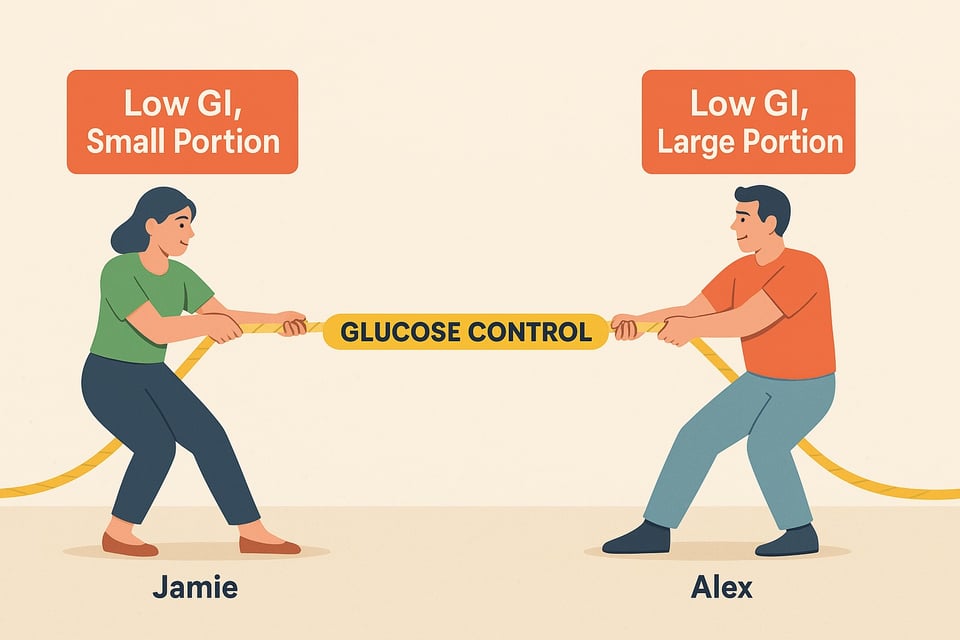Why GI is just the pass, but glycemic load decides the game.
🍝 Quantity Over Quality?
The Glycemic Load Lesson from Alex, Jamie & a Big Bowl of Pasta

Last week, we unpacked the Glycemic Index (GI)—how fast a food spikes your blood sugar.
And we met Alex and Jamie at breakfast.
Alex: Bagel + orange juice = sugar rollercoaster 🎢
Jamie: Eggs + avocado + whole grain toast = stable energy 🚗
But lunch is where the real twist begins.
🥣 The Pasta Plot Twist
Trying to eat better, Alex chooses whole wheat spaghetti—a low GI win!
But he piles on three bowls.
Jamie? A single serving of quinoa and roasted veggies.
Now what?
📉 Even though Alex picked a “slow sugar” food, the amount turned it into a high Glycemic Load (GL) meal.
That means: slow sugar release, yes—but a lot of it. His blood sugar might not spike fast, but it’ll still climb high and linger there.
🧪 Where Glycemic Load Came From
GI was introduced in the early 1980s by Dr. David Jenkins to help people with diabetes understand which carbs spiked their blood sugar the fastest.
But something was missing.
People were asking:
“If watermelon is high GI, why doesn’t it spike me?”
“If pasta is low GI, why do I still crash?”
To fix this, scientists developed Glycemic Load—a way to factor in both speed (GI) and quantity (carbs per serving). It answers:
👉 How fast will this food raise my blood sugar?
👉 And how much sugar does it deliver?
It was built to help anyone watching blood sugar levels—especially those with diabetes, prediabetes, or metabolic concerns.
🔍 What GlucoSpike AI Sees
This is exactly why GlucoSpike AI doesn’t stop at “low GI = good.”
We factor in the real-world portions you're likely to eat.
We know that a small bowl of brown rice behaves differently from a mountain of it.
That watermelon is high GI, but low load—so your snack is probably fine.
No need to memorize formulas. No math class required.
We built GlucoSpike AI so you get clear, confident predictions—minus the guesswork.
💡 Real Takeaway
Low GI is a great starting point.
But Glycemic Load tells the full story.
✅ A little watermelon? High GI, but low load = you're good
⚠️ A big plate of pasta? Low GI, but high load = caution
Portion size still matters—even for “healthy” carbs.
📬 Next Week: Why Some “Healthy” Meals Leave You Hungrier
Spoiler: it’s not you—it’s insulin.
Got a question, myth, or mystery you want us to tackle next? Email us at hello@glucospike.ai.
Until then,
Eat smart. Stay steady.
—Team GS
